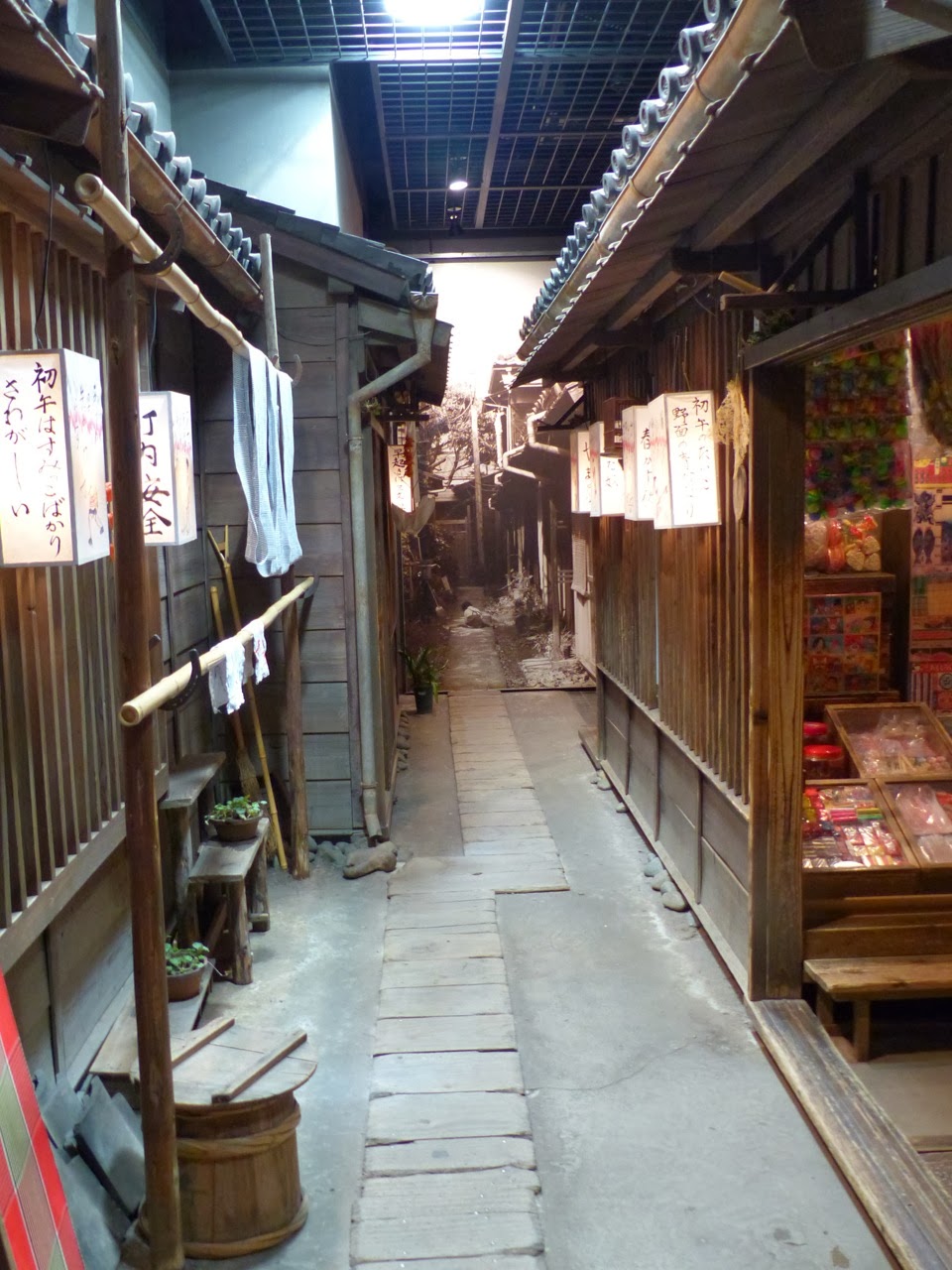 In the early 20th Century Tokyo had many shitamachi districts (pronounced she-tah-mah-chee) where Tokyo's common people lived and worked. They also included lively entertainment areas. First the Great Kanto Earthquake of 1923 devastated the districts. What the tremors didn't destroy, fires did. The districts were largely wooden and since the earthquake occurred over the lunch hour while many cooking fires were burning, over 100,000 lives were lost in the inferno. This photo shows the devastation of Tokyo taken from the top of the Imperial Hotel, the only hotel to remain standing in the region.
In the early 20th Century Tokyo had many shitamachi districts (pronounced she-tah-mah-chee) where Tokyo's common people lived and worked. They also included lively entertainment areas. First the Great Kanto Earthquake of 1923 devastated the districts. What the tremors didn't destroy, fires did. The districts were largely wooden and since the earthquake occurred over the lunch hour while many cooking fires were burning, over 100,000 lives were lost in the inferno. This photo shows the devastation of Tokyo taken from the top of the Imperial Hotel, the only hotel to remain standing in the region. 
Then World War II came and air raids finished off what the earthquake and fires had failed to destroy. After the war, as Tokyo modernized, shitamachi districts were transformed and the lifestyles of ordinary people changed greatly. This photo from York Magazine, 1945, shows a flattened Tokyo.
We visited the Taito-ku Shitamachi Museum to see what life was like in the early 20th C for common people.
This is an alleyway, or roji, a very important part of daily life for the people of the district. Notice how narrow it is? The roji varied in width from less than 1 meter to 3.6 meters. A gutter for rainwater and household waste ran down the alley and it was covered by boards. Residents hung out their wash, grew potted plants, and let their children play in the alleys. Here lives were intimately connected.
Along with homes there were merchant shops and workshops for tradesmen.
The items in this photo may look familiar to older generations of Americans like me. Do you (or your grandparents) remember cheap toys from Japan that could be bought in American "dime stores"? Did you perhaps own a spinning top (begomai) or a little tin toy from Japan? These photos are of a dagashi-ya, a store for children that sold candy, toys and games.
In Japanese homes of this era, all work was done while seated on the floor. There was a trap door in the ceiling to let cooking and heating charcoal smoke out and allow light to come into the family's room (or two rooms for the more well-off.) Tables were folded down at night and futons were taken out of cupboards. Walls were thin. All water was drawn from a community well. There was no privacy.
 | |||||
| Not unlike earthquake kits today, families and shops kept emergency boxes in case of fire or disaster. |
This cat-charm is said to bring good luck. Generally, a cat with its right paw raised is said to bring money, and the left paw raised brings people or customers to a business. You can buy these in street stalls today. They are everywhere. (I am not going to get one for fear it will bring more students to my class loads because we can't compete with Japan and the rest of the world if teachers cannot meet the needs of students.) Hopefully 2014 will bring better economic times to people worldwide and especially those who have the least.
Every year on set "rooster" days in November these elaborate talismans are sold at the torinoichi festival market to give thanks for a successful year and pray for a good year of business to come. The rake shape symbolizes raking in good fortune.
At the shrines people purchased papers with fortunes randomly given. Some received "Good", some "Medium" and some "Small" Fortunes.
This is part of the message for a "Small Fortune"...
.Everything won't go well at first, you may also have other difficulties later, but if you stay patient and keep on trying hard, you will finally be getting well.
.Happy letters are few.
.You may lose, when in dispute.
.You may have babies, but pay much attention about how to bring them up.
Many people take these very seriously even today.





No comments:
Post a Comment